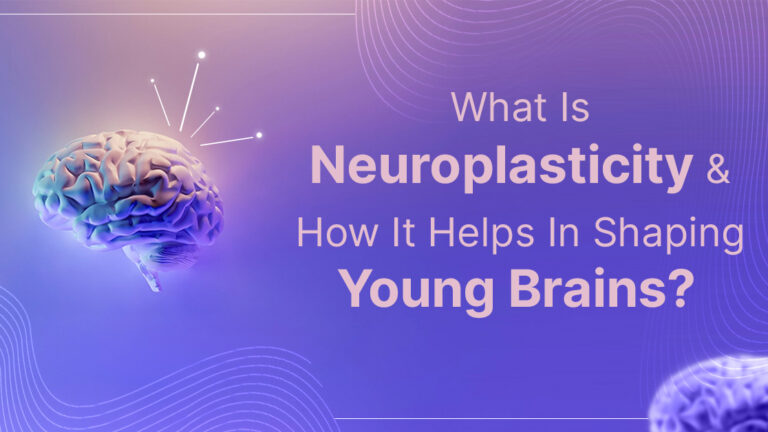Our human brains are nature’s marvel and keep evolving per our surroundings. The constant evolution and adaptation of human brains is due to neuroplasticity. Neuroplasticity is the brain’s ability to adapt and reorganize the ever-forming neural connections an individual undergoes. Hence, this blog will explore neuroplasticity and how it helps shape young brains.
Understanding Neuroplasticity:
Neuroplasticity, or brain plasticity, is the brain’s ability to adapt to surroundings. Hence, neuroplasticity creates numerous neural pathways while strengthening the existing ones, enabling the brain to accept the new environment, recover, and even compensate for the damaged ones.
Early Childhood Development
Neuroplasticity is the most prominent growth in the initial years of childhood and a critical time for brain development. Children’s brains are highly receptive to learning various memory improvement techniques and environmental stimuli during this time. Neural connections are rapidly forming and strengthening based on the experiences a child is exposed to.
For example, a baby’s brain is wired to absorb language, and exposure to speech begins to establish the foundations for language acquisition. The more language-rich experiences a child has, the more robust and complex their language network becomes.
Learning & Education
In the context of education, neuroplasticity can revolutionize teaching methods. This ability stimulates young minds with learning experience and exposes the students to adapt to various teaching styles. Hence, as a result, the child’s right brain education, problem-solving and cognitive abilities develop significantly.
Furthermore, educators can leverage neuroplasticity by encouraging growth mindsets in students. This mindset promotes the idea that intelligence is not fixed but can be developed through effort and learning. When students believe in their capacity to learn and improve through various concentration activities for students, they are more likely to engage in challenging tasks and persist through difficulties.
Emotional Regulation & Resilience
Additionally, neuroplasticity also plays a crucial role in emotions. It is to be noted that young minds are subjected to various emotional experiences, and neuroplasticity helps these minds shape the brain’s circuitry and respond to the situation effectively.
Teaching children and adolescents emotional intelligence and coping strategies can help them develop resilient neural networks. These networks enable them to manage their emotions better and navigate life’s challenges, ultimately promoting mental well-being.
Neuroplasticity is the primary mechanism that shapes young minds. This ability helps form neural connections that stimulate environmental changes and other experiences. Understanding and leveraging neuroplasticity is vital for optimizing early childhood development, enhancing learning and education, facilitating recovery from brain injuries, and promoting emotional regulation and resilience.
Approach Sugsar Edutech specializes in cognitive skills improvement, cognitive behavioral therapy, and various brain training techniques to unlock the full potential of neuroplasticity and empower them to thrive in an ever-changing world.




